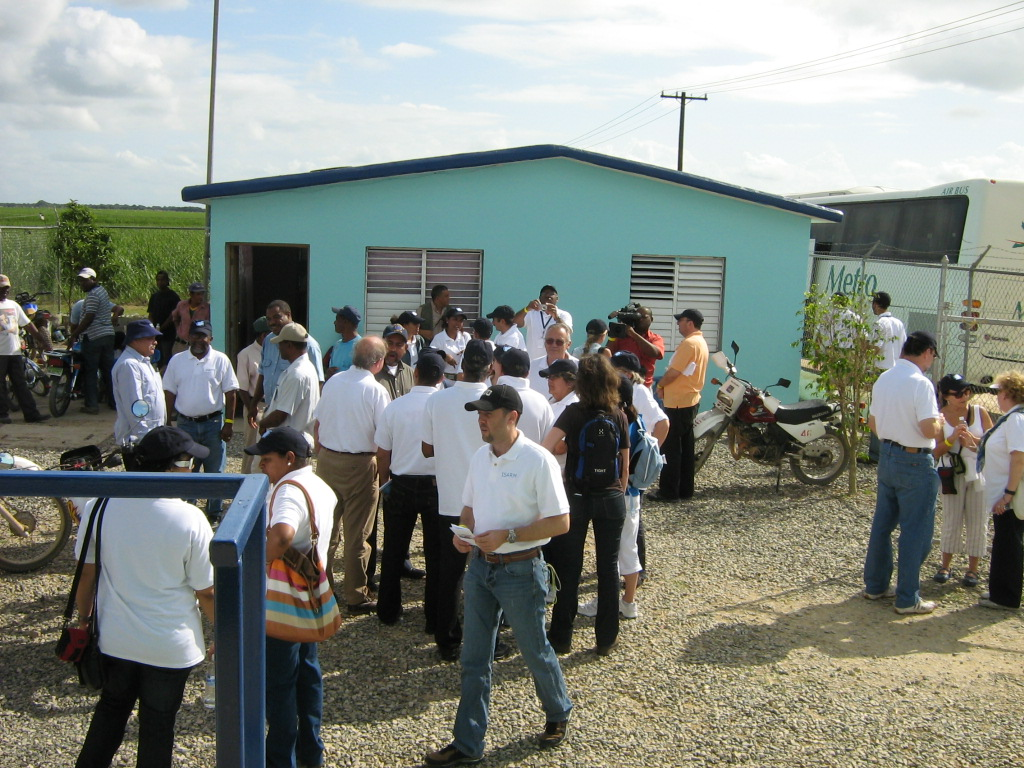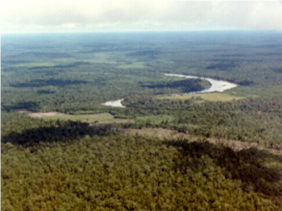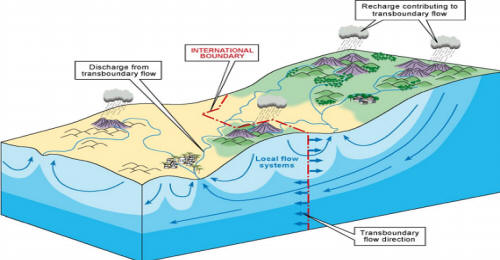|
 The UNESCO/OAS ISARM-Americas Programme is the regional initiative for the Western Hmisphere, of the worldwide ISARM Programme, and is jointly coordinated by the UNESCO International Hydrological Programme (IHP) and the Department of Sustainable Development of the Organization of American States (DSD/OAS).
The UNESCO/OAS ISARM-Americas Programme is the regional initiative for the Western Hmisphere, of the worldwide ISARM Programme, and is jointly coordinated by the UNESCO International Hydrological Programme (IHP) and the Department of Sustainable Development of the Organization of American States (DSD/OAS).
The global “Internationally Shared Aquifer Resources Management-ISARM Programme” was launched at the 14th Session of the UNESCO IHP Intergovernmental Council in June 2000, in cooperation with several other international organizations, notably the Food and Agriculture Organization (FAO), the United Nations Economic Commission for Europe (UNECE), the United Nations Economic and Social Commission for Western Asia (UNESCWA) and the International Association of Hydrogeologists (IAH).
From the beginning of activities in 2003 up to December 2005, the Programme has assessed the prevalence of transboundary aquifers in the Western Hemisphere, with the contributions of a network of National Coordinators, which represent 25 countries of the Western Hemisphere. Two previous Coordination Workshops have been held, the first in Montevideo, Uruguay, in September 2003, and the second in El Paso, Texas, in November 2004. According to data, as of November 2004, 62 transboundary aquifers were identified: 36 in South America, 15 in Central America, 8 in North America, and 3 in the Caribbean.
Since the First Coordination Workshop in Montevideo, the involved countries proposed nine transboundary aquifers as possible case-studies for project implementation, using the ISARM approach. They are located in areas of particular concern in the Americas: arid and semi-arid regions; areas extremely vulnerable to natural hazards and to climatic variability due to climate change; areas with severe land/water degradation due to increased urbanization and industrialization, as well as extensive agriculture and deforestation, which heavily impact entire ecosystems; and areas of potential water use conflict, with high levels of poverty and poor health care.
 In the Spring of 2004, the ISARM-Americas Steering Committee identified three priority case-studies from the list: the Artibonito and Masacre aquifers on the island of Hispaniola (Haiti – Dominican Republic), as an example of inter-mountainous and coastal transboundary aquifers in Small Islands Developing States (SIDS); the Yrenda-Toba-Tarijeno aquifer system in the Gran Chaco Americano (Argentina-Bolivia-Paraguay), representing transboundary aquifers in semi-arid zones of South America; and the Hueco Bolson aquifer (Mexico-USA), as a striking example of transboundary aquifers in urban areas.
In the Spring of 2004, the ISARM-Americas Steering Committee identified three priority case-studies from the list: the Artibonito and Masacre aquifers on the island of Hispaniola (Haiti – Dominican Republic), as an example of inter-mountainous and coastal transboundary aquifers in Small Islands Developing States (SIDS); the Yrenda-Toba-Tarijeno aquifer system in the Gran Chaco Americano (Argentina-Bolivia-Paraguay), representing transboundary aquifers in semi-arid zones of South America; and the Hueco Bolson aquifer (Mexico-USA), as a striking example of transboundary aquifers in urban areas.
Why bring transboundary aquifers into the international policy arena?
- Some contain drinking water that could meet the needs of the entire planet for decades.
- Surface water is tangible, whereas aquifers are out of sight and therefore out of mind.
- Their significance may not be well understood by the global community and thus must be made known.
- The integration of transboundary aquifiers into transboundary water resources.
- Identifying which policy issues should be addressed in river basins and which aquifers do not coincide with the project.
- Lack of knowledge of how many significant transboundary aquifers there are globally.
- Figuring out how to adapt existing international regulation to the multifarious aquifer conditions.
- Outreach for the Economic Commission for Europe’s (ECE) pioneering survey – into the Commonwealth of Independent States Region (CIS), Euro-Med Region, Europe and Central Asian Region (ECA).
- The importance of transboundary aquifiers is often diffficult for decision makers to conceptualize.
 The Programme aims to promote the recognition and understanding of transboundary groundwater resources, and foster collaboration among the countries sharing the same aquifer to achieve consensus on legal, institutional, socio-economic, scientific, and environmental aspects. Another important objective of the ISARM Americas Programme is the identification of case-studies of particular interest and to create a comprehensive Inventory of Transboundary Aquifers of the Americas. This would be a collection of data regarding the hydro-geological characteristics, the actual use of the shared groundwaters and the legal and institutional aspects. Other objectives include:
The Programme aims to promote the recognition and understanding of transboundary groundwater resources, and foster collaboration among the countries sharing the same aquifer to achieve consensus on legal, institutional, socio-economic, scientific, and environmental aspects. Another important objective of the ISARM Americas Programme is the identification of case-studies of particular interest and to create a comprehensive Inventory of Transboundary Aquifers of the Americas. This would be a collection of data regarding the hydro-geological characteristics, the actual use of the shared groundwaters and the legal and institutional aspects. Other objectives include:
- To establish a network of multidisciplinary experts for identification and definition of internationally shared aquifers
- To learn, from case studies, the issues relevant to successful management of internationally shared aquifers resources
- To raise the awareness of policy and decision makers of the significance and importance of transboundary aquifer resources, forming a critical component of the world freshwater resources
- To disseminate the lessons learnt from case studies and encourage policy and decision makers to incorporate appropriate internationally shared aquifer management

►International Shared Aquifer Resource Management (ISARM)
►Case Studies
►Events
►8th Coordination Workshop, Santa Fe, Argentina:
Agenda  | Final Reportl | Final Reportl  (not available)
(not available)
►7th Coordination Workshop, Quito, Ecuador:
Final Report 
►6th Coordination Workshop, Juan Dolio, Dominican
Republic:
Final Report 
►5th Coordination Workshop, Montreal, Canada:
Final Report 
►4th Coordination Workshop, San Salvador, El Salvador: Final Report
English  |
Spanish |
Spanish 
►3rd Coordination Workshop, São Paulo, Brasil
Agenda  |
Final Report:
English |
Final Report:
English  |
Spanish |
Spanish 
►2nd Coordination Workshop, El Paso 
►1st Coordination Workshop, Montevideo 
|